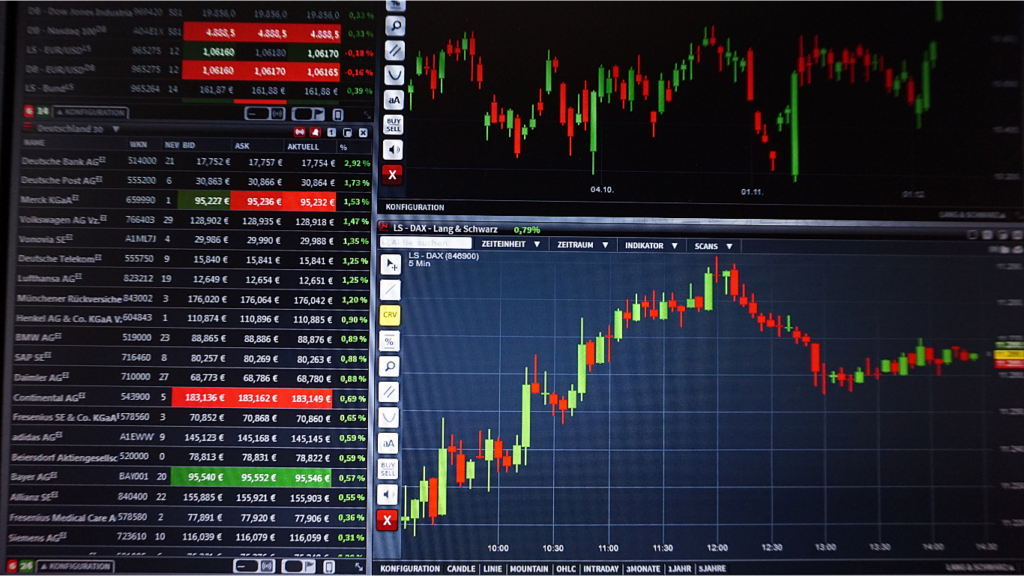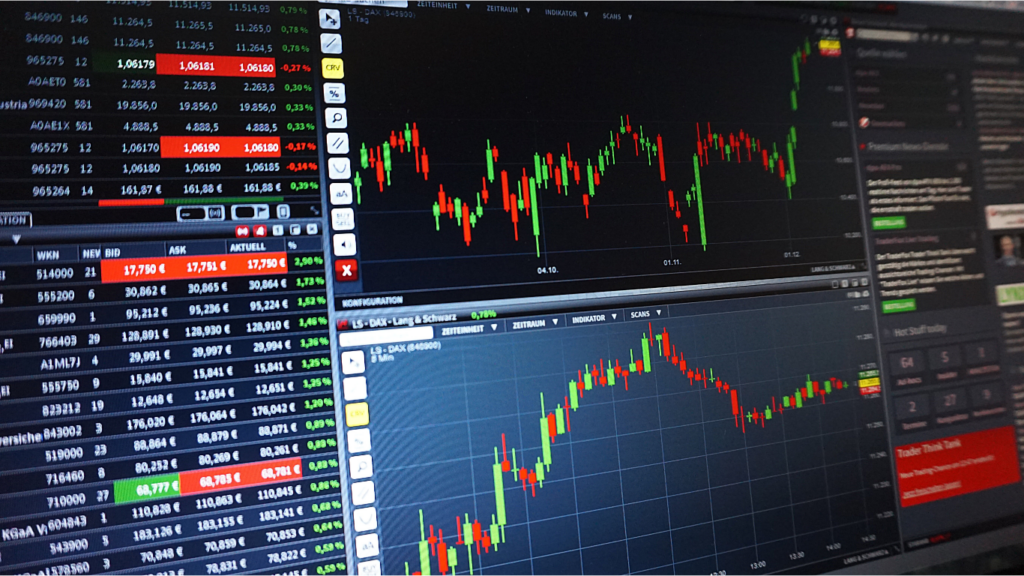Understanding Market Momentum
Market momentum reflects the strength and speed of price movements in financial instruments over a certain period. Analyzing this helps identify trends, making it easier to predict future movements. By comprehending how market momentum works, I can anticipate market changes and adjust my strategies accordingly. Key factors include volume, volatility, and price changes, which collectively signal potential shifts in market direction.
Momentum relies on the continuation of trends rather than reversals. If a price is increasing, it’s likely to continue rising for some time. This behavior results from positive feedback loops where buying leads to more buying, often driven by investor sentiment and external economic factors. A strong grasp of market momentum aids in timing entry and exit points, enhancing trade profitability.
Incorporating momentum analysis into my trading toolkit reduces reliance on speculation. While historical data provides context, momentum offers actionable insights by shining a light on the present market state. Understanding these dynamics ensures I stay ahead in the financial markets, equipped to respond to fluctuations effectively.
Importance of Market Momentum Indicators
Market momentum indicators provide crucial insights into the strength and direction of price trends. These indicators help me identify the persistence of price movements, reducing guesswork and enhancing strategic planning in my trades. By analyzing these signals, I can assess market sentiment effectively.
Understanding momentum indicators increases a trader’s ability to predict future market trends. This reduces overreliance on luck by identifying signals indicating a continuation or reversal of existing trends. By observing these indicators, I can gain a competitive edge.
Each indicator offers unique insights that inform decision-making. For instance, indicators such as moving averages demonstrate trend direction, while others like the Relative Strength Index (RSI) highlight the speed and change in price movements. By integrating various momentum indicators, I create a comprehensive analysis toolkit. This enhances my ability to make informed, timely trading choices.
Price Trends

Price trends reveal the general direction of market movement and significantly impact momentum analysis. They assist traders in predicting potential price shifts in financial instruments, bolstering strategic decision-making.
How to Identify Price Trends
Recognizing price trends requires monitoring consistent changes over time.
I observe sustained price increases or decreases to spot an uptrend or downtrend.
- Employing technical charts like line or candlestick charts further highlights these trends.
- Analyzing peak and trough patterns assists me in determining whether a trend is reversing.
- Consistent higher highs and higher lows signal an upward trend.
The Role of Moving Averages
Moving averages smooth out price data, making it easier to identify trends. I use them to discern the trend’s overall direction, particularly over various periods. A simple moving average (SMA) calculates the average price over a specific period, offering a clear perspective on the average trend. When a short-term moving average crosses above a long-term one, it indicates a potential uptrend, while the opposite suggests a downtrend. By integrating moving averages into my analysis, I gain a clearer vision of price momentum and underlying trends.
Volume Analysis
Volume analysis aids in understanding market momentum by indicating the strength behind price movements. It adds conviction to price trends, enhancing trade decision precision.
Volume Spikes and Their Implications
Volume spikes occur when trading activity surges unexpectedly, signaling potential price movement shifts. These spikes suggest heightened interest, often preceding or accompanying significant price changes. I monitor volume spikes in conjunction with price action to identify new opportunities. For instance, a sudden volume increase during an uptrend might indicate a continuation, while in a downtrend, it may hint at a reversal. Recognizing volume patterns helps me adjust strategies effectively.
Volume as a Confirmation Tool
Using volume as a confirmation tool validates price trends and reversals, reducing speculative risks. I look for alignment between volume and price direction; for example, rising volume supports a bullish trend, while declining volume raises caution. This approach bolsters my analysis by confirming genuine movements rather than temporary fluctuations. By integrating volume analysis with other indicators, I confirm trade signals, enhancing my strategic planning.
Relative Strength Index (RSI)
Relative Strength Index (RSI) is an essential tool for analyzing market momentum. It helps in assessing the speed and change of price movements by quantifying how fast and how much the price of an asset is changing.
Measuring Overbought and Oversold Conditions
RSI measures overbought and oversold conditions by calculating a value between 0 and 100. Typically, RSI values above 70 suggest an asset is overbought, indicating potential price reversals. Values below 30 denote oversold conditions, hinting at possible upward corrections. This quantification allows traders to identify extreme market conditions and respond appropriately. By integrating these signals into my analysis, I can better anticipate changes and make informed trading decisions.
Using RSI for Market Predictions
Using RSI for market predictions involves analyzing changes in the index over time to anticipate future price movements. A divergence, where the RSI trend differs from price action, can signal potential reversals. For instance, if the price hits a new high while RSI doesn’t, it might indicate weakening momentum. Monitoring these patterns helps me gauge market sentiment and predict shifts in trends, enhancing my strategic approach to trading.
Moving Average Convergence Divergence (MACD)
The Moving Average Convergence Divergence (MACD) is a powerful momentum indicator used to reveal changes in trend direction, strength, momentum, and duration. It offers crucial insights for investors seeking to time their trades effectively.
How MACD Signals Work
The MACD indicator consists of three main components: the MACD line, the signal line, and the histogram. The MACD line is derived by subtracting the 26-period Exponential Moving Average (EMA) from the 12-period EMA. The signal line, typically a 9-period EMA, smooths the MACD line, helping to identify potential buy or sell signals. The histogram visually represents the difference between the MACD line and the signal line, showing the strength of a trend. A rising histogram suggests growing momentum, while a falling one indicates slowing momentum. By analyzing these components, traders can gain a deeper understanding of market dynamics.
Interpreting MACD Crossovers
Crossovers between the MACD line and the signal line provide actionable trading signals. A bullish crossover occurs when the MACD line crosses above the signal line, suggesting a potential uptrend and a buying opportunity. Conversely, a bearish crossover, where the MACD line crosses below the signal line, indicates a potential downtrend and a selling opportunity. The context of the overall trend and the position of the MACD relative to the zero line enhance the reliability of crossovers. Positive readings above the zero line strengthen bullish signals, while negative readings below reinforce bearish signals. By incorporating these interpretations, traders can refine their strategies and navigate market shifts more effectively.
On-Balance Volume (OBV)
On-Balance Volume (OBV) plays a crucial role in understanding market momentum. It combines price movement with volume, offering insight into the strength and direction of a trend.
Understanding OBV as a Momentum Indicator
OBV calculates cumulative volume as a measure of momentum.
- When prices rise, the day’s volume adds to the OBV; when prices fall, it subtracts.
- This calculation results in a running total that helps identify buying and selling pressure.
- A steadily rising OBV suggests strong upward momentum, while a declining OBV indicates selling pressure.
- Traders rely on OBV to gauge the commitment of participants in a trend, as it often precedes price movements.
Using OBV to Confirm Price Movements
OBV serves as a confirmation tool for price movements by analyzing volume trends. If OBV aligns with price trends, it confirms the validity of the movement. For instance, a price increase accompanied by a rising OBV suggests a genuine uptrend. Conversely, when price and OBV diverge, it signals potential reversals or trend weaknesses. By incorporating OBV into analysis, traders can enhance their confidence in trend directions, reducing guesswork and refining their trading strategies.

 Caitlin Grove brought her expertise in communication and content strategy to Funds Fortune Roll, crafting engaging and educational articles that resonate with a diverse audience. Her ability to break down sophisticated financial concepts into relatable and actionable advice has helped the platform connect with both novice and seasoned investors. Caitlin's dedication to delivering high-quality content has been instrumental in the success of Funds Fortune Roll.
Caitlin Grove brought her expertise in communication and content strategy to Funds Fortune Roll, crafting engaging and educational articles that resonate with a diverse audience. Her ability to break down sophisticated financial concepts into relatable and actionable advice has helped the platform connect with both novice and seasoned investors. Caitlin's dedication to delivering high-quality content has been instrumental in the success of Funds Fortune Roll.